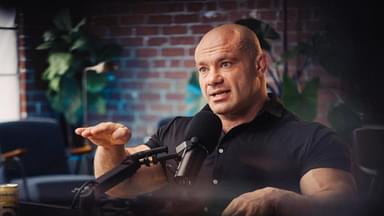Often, fitness enthusiasts carry the goal of muscle growth and development during their training journey. The goal can be achieved through various approaches where individuals lean towards a certain technique. Exercise scientist Dr. Mike Israetel talked about some of them in a podcast with Chris Williamson.
Dr. Mike Israetel primarily focused on one of the approaches- isometric exercises and its contributions toward an increase in size. Isometric workouts involve static stretch and contraction of the muscles without any visible movement of muscles in the surrounding joints.
If the goal is muscle growth, Dr. Israetel firmly believed that including isometric workouts wasn’t necessary. While they do involve contractions and stretching of muscles that could be beneficial in other ways, there are better approaches achieving the goal.
Any form of isometrics involves pausing mid-workout to develop some sort of resistance. This step is good if the fitness enthusiast needs some variation in their workout, making it more challenging to perform. However, Dr. Israetel raised his thoughts on the subject.
“I wouldn’t say it’s essential, and it might be a downside. So all that energy you’re spending, stopping at the squeeze, you could put into the centre, which probably grows more muscle.”
To this, Williamson asked about the appropriate position to pause at if one chose that route during workouts. The scientist reiterated that pausing at the stretched instead of contracted move could provide more advantages.
“Pause at the stretch is cool…It absolutely reduces the injury probability.”
Ultimately, isometrics are more helpful in building strength over the size of muscles, no matter how an individual performs. However, all this boils down to perfecting the technique during training.
Dr. Mike Israetel Revealed the Factors That Determined Good Technique During Workouts
In the same podcast, Dr. Israetel went on to discuss the importance of having good technique while exercising and how it played into the overall workout. Good technique depended on factors like targeting a specific group of muscles, establishing stability and control, using the full range of motion, and so on. All of these together determined how an individual approached their routine for the day.
Generally speaking, aiming at a certain set of muscles at a time helps distribute the strain and focus across the routine. Maintaining stability and control while working out ensured the prevention of injury. And lastly, utilizing the full range of motion guaranteed the maximum stretch and contraction that an individual could benefit from. All of these factors worked together to make up a holistic approach to exercising.




